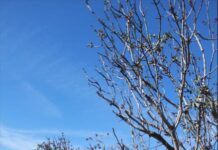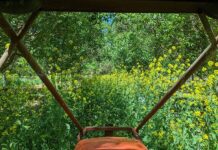
New and current pistachio growers can benefit from an updated UC cost study that outlines costs and returns of establishing and producing pistachios in the San Joaquin Valley.
The study, written by UC ANR’s Agricultural Issues Center, UCCE and the UC Davis Department of Agricultural and Resource Economics, helps new growers create a budget for production loans for their bank, according to Jeffrey Gibbons, plant manager of Setton Pistachio of Terra Bella.
Growers aren’t the only group that can benefit from the cost study, though. Gibbons said that owners can use information in the study to be assured their farm managers are not overcharging them for farming costs, and farm managers can use this it to see how they compare to the industry.
The study uses a hypothetical orchard planted at 128 trees per acre with an expected life span of 40 years to give an idea of the average costs a pistachio grower might face. The study’s authors, including 17 UCCE farm advisors/specialists and one pomology expert at CSU Fresno, describe assumptions used to identify current costs for pistachio establishment and production, material inputs, cash and non-cash overhead and a ranging analysis table.
UCCE farm advisors/specialists often refer people in the industry to the cost study. Craig Kallsen, UCCE citrus and pistachio farm advisor in Kern County, said that pistachio growers, potential future growers, land leasers, appraisers and loan officers benefit from detailed and current information included in the studies. He also noted that information in the study can help growers decide not to plant pistachio trees in an orchard if the economics aren’t viable.
“The information in the cost study can prevent a grower from making a million-dollar mistake by planting a crop that is not suitable for their soil, water availability or for an economic reason not related to crop environment/adaption suitability such as length of time to first harvest or high cost of establishment,” he said.
The updated study, “Sample Costs to Establish and Produce Pistachios, Low-Volume Irrigation, San Joaquin Valley South – 2020” can be downloaded for free here. For an explanation of calculations used in the study, refer to the section titled Assumptions. Sample cost of production studies for many other commodities are also available.
















